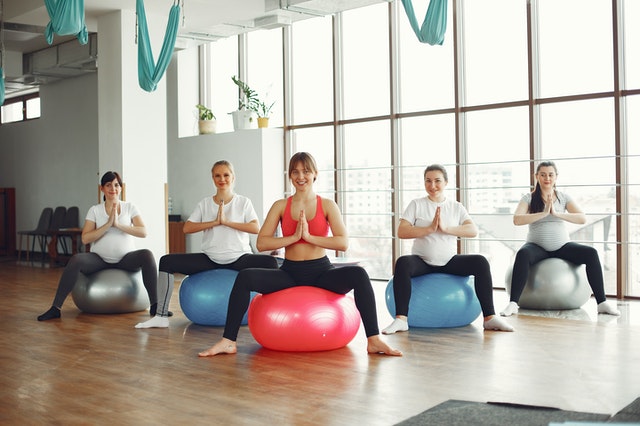Pregnancy is a beautiful period for a woman and also for a family as a whole. Maintaining a healthy pregnancy is the priority of every pregnant lady. Energy foods for pregnancy or healthy diets aren’t enough for maintaining a healthy pregnancy, but exercises or yoga during pregnancy can improve your body, reduce some common ailments such as back pain and fatigue, and reduce pregnancy symptoms. There is evidence that physical activity can prevent gestational diabetes (diabetes that develops during pregnancy), relieve stress, and build the stamina needed for labor and delivery. There are many exercises for pregnant women to practice during pregnancy. Moreover, pregnancy exercises classes are also a good option for pregnant women to opt for. Pregnancy ball exercises are one of the best exercises for pregnancy.
What is a Pregnancy Exercise Ball?
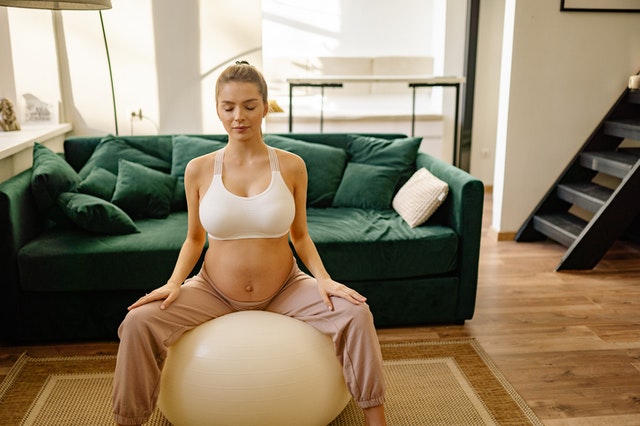
The pregnancy exercise ball is also known as a birthing ball. The birthing ball is the same as the gym ball. These balls are made up of durable material. They will not get drilled or punctured easily. Gym balls tend to be smaller than delivery balls. The maternity ball is larger for comfort and has a non-slip coating. Pregnancy ball exercises can reduce pain and help you feel more comfortable during labor.
Many pregnancy balls are spherical. Some pregnancy balls are shaped like beans. Peanut balls are made of the same material as round maternity balls. But instead of being round, these balls are larger at the ends and have a narrow, bean-like center. You can’t use a regular birthing ball while lying in bed. For this purpose, beanball can be used. It is easier to assume a comfortable, relaxed position while resting or sleeping because you can lift your leg over or around the beanball.
Why Do We Use A Fitness Ball?
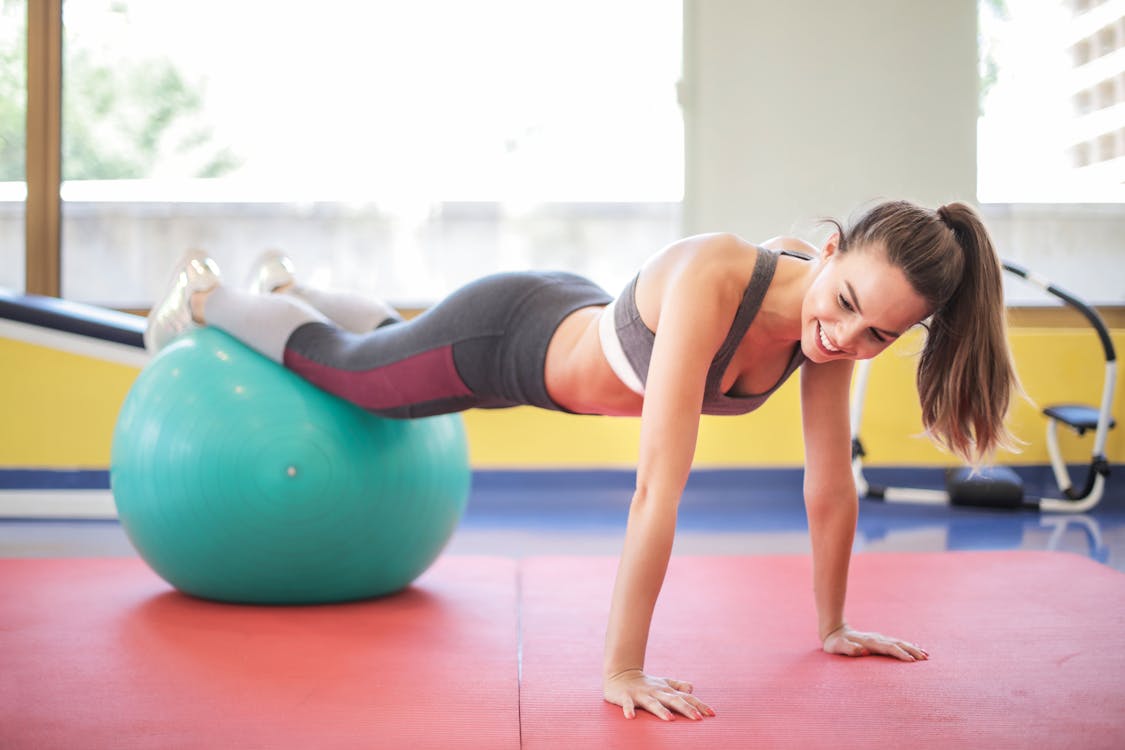
As your pregnancy belly gets bigger and bigger, a fitness ball will be able to give you the support you need for the extra weight. It will help you to work your important abdominal muscles without putting pressure on your pelvis and back. Using it as a yoga aid can help you maintain your balance when looking for more difficult positions. Then some exercises can be used to induce labor (but we cross that bridge when we get there).
You can also use the ball just for sitting down, as it may be easier for you to get on and off than a chair or sofa. The best part is working your core muscles and improving core strength even when you are just sitting down. That is because you are constantly using those muscles to stabilize yourself on the ball.
Is Exercise Ball Pregnancy Save During The Pregnancy Period?
Pregnant women have a lot of questions, regarding pregnancy. One of them is, is exercising with a ball during pregnancy safe? These balls are completely safe to use during pregnancy. The most important thing is to consult your doctor before starting the exercise.
These balls are safe during seated positions. Though you can lose your balance while using the ball. You just have to firm your feet on the floor. And try to maintain your balance.
How to Use A Pregnancy Ball?
-
How Can A Birthing Ball Help With Pregnancy?
If back pain occurs during pregnancy, it is possible to sit on the pregnancy ball while watching TV or at home. This should assist in relieving some pressure, therefore, making you feel much less uncomfortable. It’s also a great exercise that can help strengthen back and stomach muscles and improve posture to prepare the body for childbirth. Sitting straight on the ball can help change the baby’s position from back to front, which also helps relieve any back pain you might be feeling.
-
How Can A Birthing Ball Help With Labour?
When trying to find a comfortable position during labour can be difficult, but using the ball and trying different positions can help relieve any spinal or pelvic pressure. Swinging side to side or back to front while sitting on the ball can also reduce pain.
You can also try another position with the ball to get on all fours to relieve your lower back and pelvis. Rest your knees on the pillow, lean forward, and hug the pregnancy ball in your arms. This position will help with comfort if you are approaching the pushing phase and cannot sit down due to pelvic pressure.
-
How Can A Birthing Ball Help After Giving Birth?
If you experience pain or pressure in the area between your vagina and anus after giving birth, don’t worry, as it is extremely common! However, you may find that it can cause some discomfort when you sit down. To relieve this pain, you can slightly deflate the pregnancy balloon to make it more comfortable and softer to sit on.
-
How Can Peanut Ball Help When on Steroids?
What’s better than a single birth ball? Of course, double! This contraption is called a peanut ball because it consists of the two birth balls that are fused together. And yes, it looks like a peanut, as he suggests. for women who need to lie down or stay in bed during labor (epidural, hypertension, etc.). The peanut ball assists you in keeping the pelvis open to get the job done.
Studies show that epidural anesthesia women benefit tremendously from a peanut ball with labor up to 2 hours shorter! The peanut ball also encourages spontaneous vaginal deliveries, as section and suction cup/caliper deliveries were also lower in the study.
How to Use The Peanut Ball to Spin/Swing Your Baby?

Here are some helpful positions for trying to use your peanut ball. This can be especially useful for babies in the back or mothers who need to rest.
-
Lying on Side Position
Mom lies on her side and places the ball between her legs. Sometimes she bends the top of her leg at a 90-degree angle, depending on how comfortable she is.
-
Fowler Position
This position is when mom is sitting straight or half-upright, and her legs are spread out in a butterfly position. The peanut ball goes under one leg. Mom changes the peanut ball as she likes or every 1 to 2 hours.
The uses of the peanut scoop do not stop there! You can also use it to sleep more comfortably during the last weeks of pregnancy.
How to Choose The Right Pregnancy Ball for You?

There are different sizes of exercise balls designed for users of different weights and heights. The taller you are, the larger the diameter of the exercise ball should be. When you sit on it, your knees and hips should form a 90-degree angle.
General Guideline Key of Size:
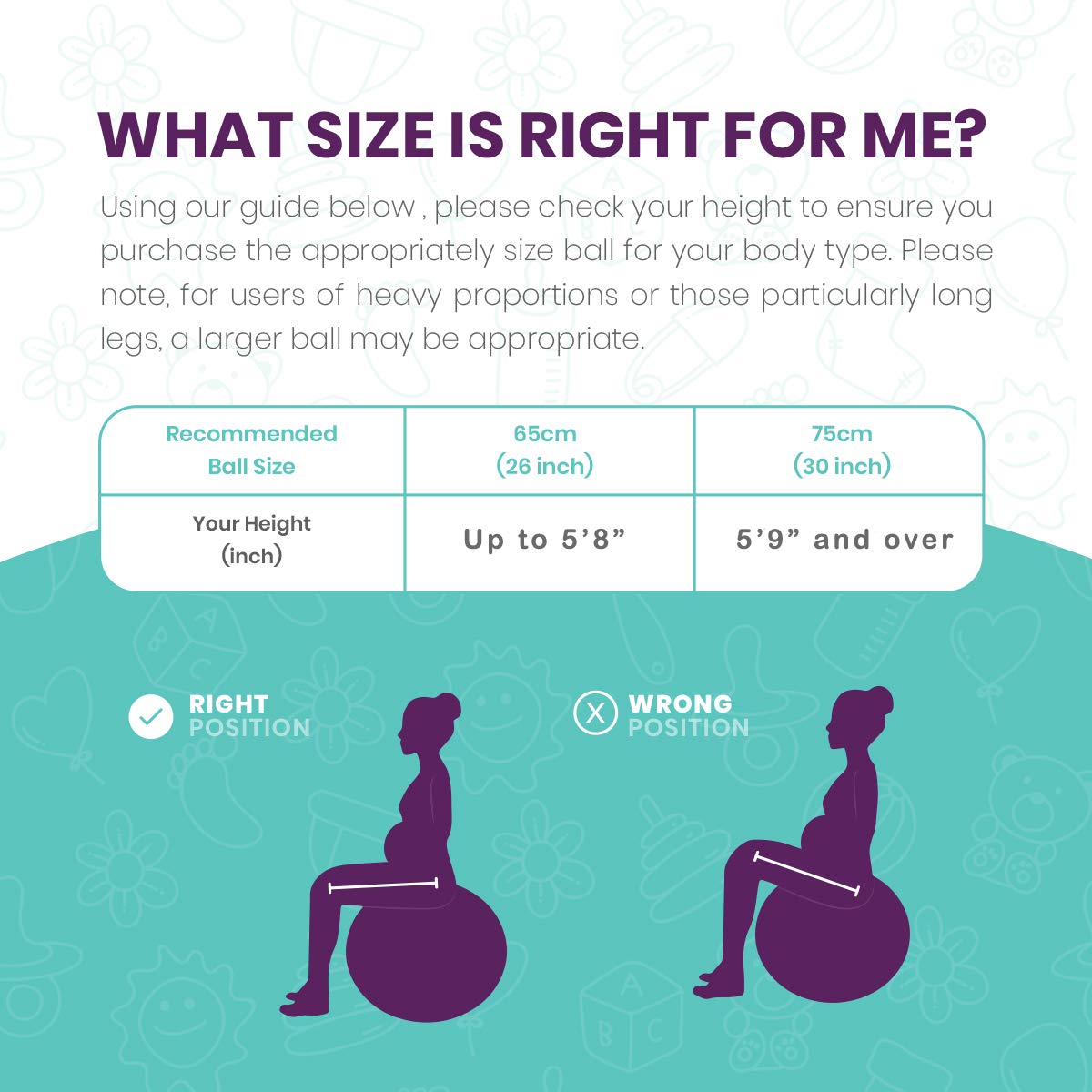
Here is a general guideline key for choosing the right size:
- If you are less than 5; choose a ball with a diameter of 45cm.
- If you are between 5; and 5’5; choose a ball with a diameter of 55cm.
- If you are between 5’5; and 5’11; choose a ball with a diameter of 65cm.
- If you are between 5’11; choose a ball with a diameter of 75cm.
Different balls can also support different weights. They all need to be labeled with a weight limit. The safest bet is to pick the one that can support the most (which will likely be around 300 pounds, although some will only support up to 250 pounds).
It is important to choose one that is classified as anti-burst. Note that “anti-burst” does not mean that the bullet cannot be punctured. However, this does mean that if the ball is punctured, it will slowly and safely deflate and not burst like a balloon, which could cause you to fall and injure you.
However, even with a slowly deflating bullet, you want to avoid a puncture, so keep it away from sharp objects; don’t forget to scan your floor for safety pins and scissors before you exercise. And finally, gym balls and animals with sharp claws don’t mix.
Also, you will need to inflate the balloon before using it, and some balloons do not always come with a pump. So don’t forget to add one to your shopping list (you might find that puffing it up becomes a workout in itself), and it might be best if a partner or friend did it for you.
Choosing for Peanut Ball:
If you are going to look for a peanut ball, you will probably be happy with the 40cm size (especially if you want to put it between your legs). Choose a larger size if you are going to sit it is like a normal birthing ball rather than to lie down with. Be sure to ask your doctor if your birthplace has a peanut ball, as you may not need to purchase one.
Is Exercise Ball Pregnancy Save During The Pregnancy Period?

Many questions are raised regarding pregnancy exercises that if they are safe for the pregnancy or not. The same questions are raised for the pregnancy ball exercises. In general, exercise ball pregnancy is a safe pregnancy exercise tool to use during pregnancy. It can be safely used during the period of gestation. The most important thing is to consult your doctor before starting the exercise.
It should be kept in mind that these balls can be used safely during the seated position. Ball exercises can challenge your balance, but it is recommended to stay stable while pregnancy ball exercises.
Best Ball Exercise During Pregnancy
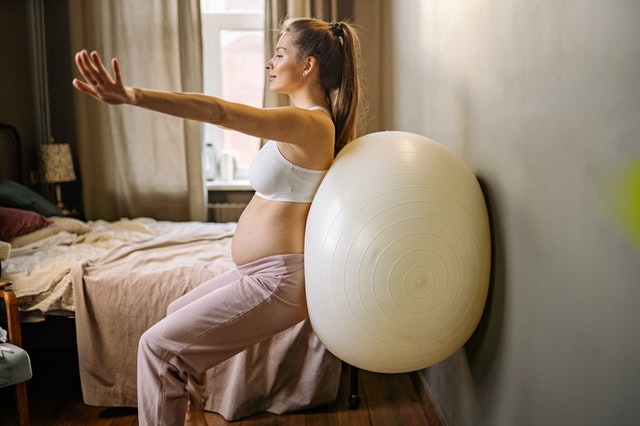
Pregnancy ball exercises:
1. Wall Squat
In this exercise, the ball is placed between the lower back and a solid wall. It call also be placed with any steady surface. The feet are placed wider than the hip-width. Knees are bent to create a low squat position by using the ball as support.
2. Pelvic Floor Ball Exercise
In this exercise ball pregnancy, the pregnant lady sits on the ball with a straight spine and contracts the pelvic muscles to stop the urine flow and hold and release the breath for a few seconds and repeat it.
3. Ball Circle
For this exercise, the women have to sit on the ball. The feet should be firm on the floor. After adjusting the position, the hip should be move in a circular motion to draw a circle on the floor by ball.
Advantages of Exercises During Pregnancy
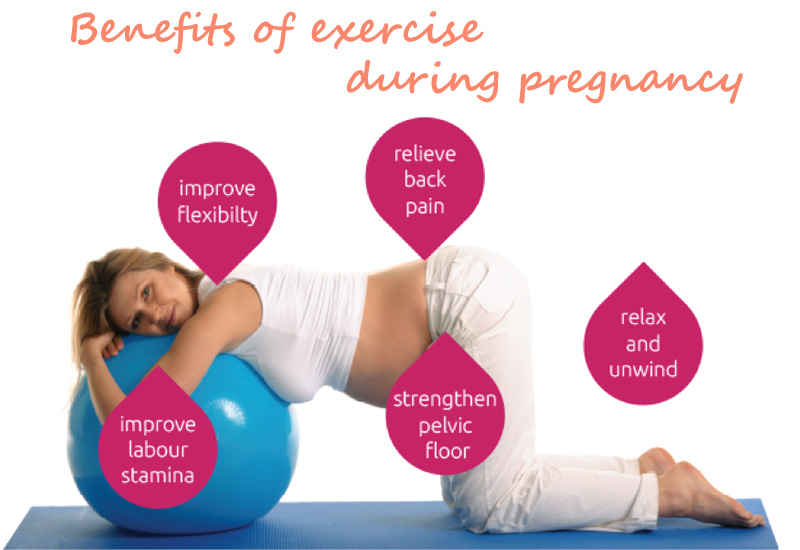
Following are the benefits of pregnancy exercises:
- Women recover fast
- Labour pain time also decreases
- They also increase the stamina for the delivery.
- They enhance emotional health, making it easy for a pregnant lady to get through the pregnancy experience.
- In a twin pregnancy, such exercises are very useful to deal with the enhanced pregnancy symptoms.
- Exercises during pregnancy reduce the chances of premature delivery.
- Exercises during pregnancy help in maintaining the weight of the pregnant lady.
- Energy foods for pregnancy regarding exercises can help a woman to maintain a healthy pregnancy.
Heart Rate and Precautions During Exercise in Pregnancy
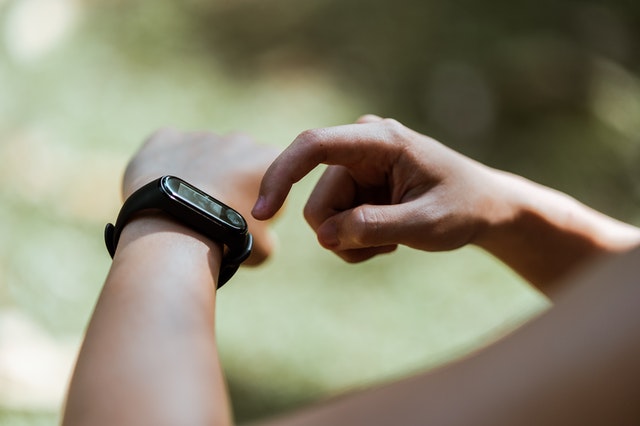
Heart rate during pregnancy exercises shouldn’t be focused on if you are doing the exercises on daily basis. Even health departments recommend women to take exercises during pregnancy, without considering the heart rate during pregnancy exercises.
You have to follow precautions if you have the following conditions:
- History of premature birth
- Cervical insufficiency
- When your placenta covers the cervix (placenta previa)
- High blood pressure
- Any heart disease
When to Start Pregnancy Ball Exercise?
You can start this exercise from early pregnancy. But the exercises keep on changing with the pregnancy progression. The exercises become gentler with the increasing gestational age, all according to the guidance that you can take from your trainer or the pregnancy exercises classes.
Precautions for Exercising in The Second Trimester
There are a few more issues to consider now that you are in your second trimester. For example, you can now feel Braxton Hicks contractions; the muscles in your uterus contract in preparation for labor. They are rare, irregular, and for the most part painless and are generally not of concern.
However, Braxton Hicks’s contractions can be very disturbing as they can often be mistaken for real contractions. It is important to know how to distinguish Braxton Hicks's contractions from labor so that you know when to act. According to eMedicine, there are key differences in differentiating Braxton Hicks contractions from those associated with labor. Birth contractions occur more frequently, last longer, and are more intense than Braxton Hicks contractions.
Exercise can trigger Braxton Hicks’s contractions. If you do fitness ball exercises (or any other physical activity) and find that the contractions get in your way and don't stop, then slow down and breathe quickly. If the contractions are painful, you should contact your doctor or midwife immediately.
Things to Consider While Doing Pregnancy Ball Exercises

A few important things should be considered if you are planning pregnancy ball exercises. Not all pregnancy balls are the same in size. Rather, they come in three sizes according to the height of the pregnant lady. So, before buying your ball, keep in mind that there should be a 4-inches difference between the knees and your hips while sitting on the ball.
Pregnancy Ball After Delivery
A birthing ball or the pregnancy ball is your true companion even after the birth of your child. They are also useful even after the birth and help the women to maintain good health after delivering the baby. The main thing they can do to you after birth is to maintain your body weight. They are also very useful for the mothers who breastfeed their babies because it helps to maintain the body posture. It helps the women to recover fast from the post-delivery conditions and also helps them to stay fresh and active after the birth of the baby.
Always consult your doctor or gynecologist before starting any pregnancy exercises to avoid any inconvenience during the pregnancy time.
Frequently Asked Question (FAQ):
1. Why not just Sit on a Chair?
If you are doing this on a hard chair, it is easy to start bending over or sinking into the chair because it is not that comfortable! A birthing ball feels soft on your butt but forces you to sit up straight as there is no back to lean on. Keeping your balance, this exercise ball engages your core and pelvic floor, strengthening those muscles for work.
2. What is Birth Ball During Prodromal Labour?
When the posture is optimal during pregnancy, the baby can settle better in the pelvis, which can help the onset and progress of labor optimally. Most women who have had prodromal labor (labor that does not progress and then stops, usually at night) also have babies who are not in the best position. If you have prodromal labor or your due date has passed (see our due date calculator here), and you think the baby’s position may be to blame, your midwife may ask you to sit down on the birth ball to engage the baby’s head.
